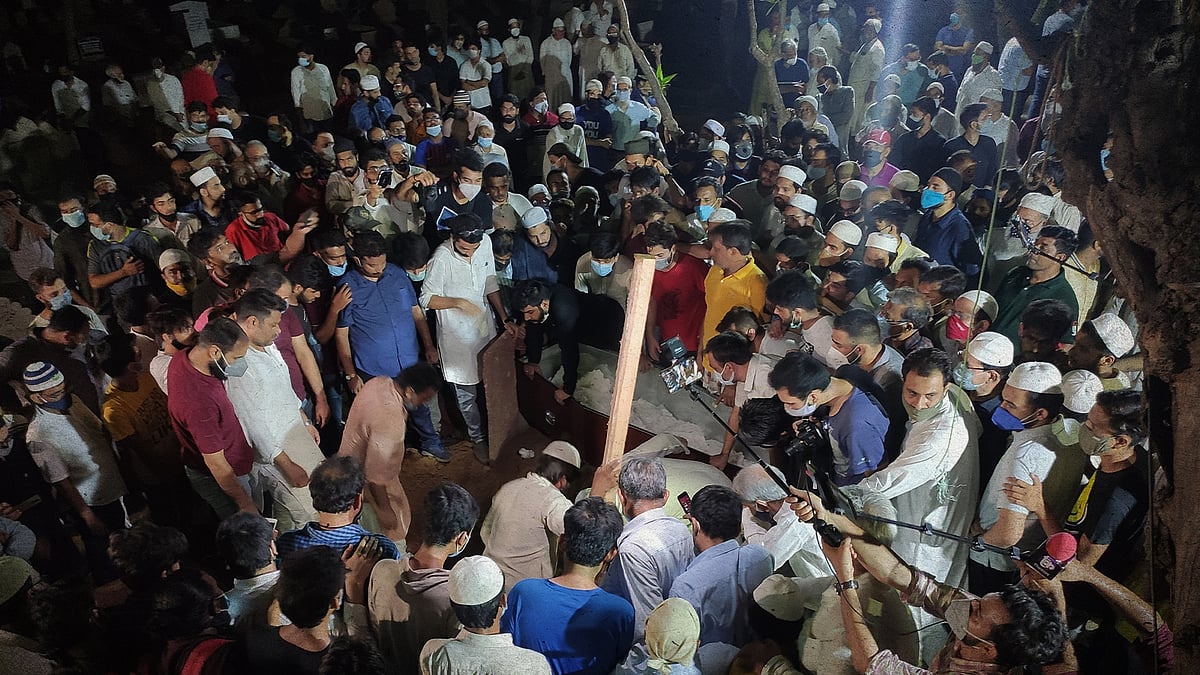Media takeaways from 2021: What the government wants you to remember, and what it doesn’t
The space for print media is diminishing, and its reliance on government advertising is worrying.
As 2021 winds down, there are images that remain seared in our collective memories of this year.
Most vivid, and eviscerating, are those of funeral pyres and half-buried bodies on the banks of the Ganga as the second wave of the Covid-19 pandemic raged through the country, killing in its wake lakhs of people. Many died unattended as hospitals ran out of oxygen. Others were not even counted as Covid deaths because they never made it to a hospital in time. Of those who succumbed to the virus, some got decent burials and cremations; others were left on the banks of rivers.
The photographers who captured these visuals need to be recognised and thanked. For these images cannot be wished away however hard the government might try and make us forget. Let us remember especially Danish Siddiqui, the brave Reuters photojournalist who was killed by the Taliban in Afghanistan in July. His photographs of the pandemic remain an unforgettable record of those terrible months.
Of course, if the Modi government had its way, the defining image of 2021 would be that of the prime minister inaugurating the Kashi Vishwanath Dham corridor on December 13. For two days, television channels gave wall-to-wall coverage of Modi carrying out Hindu religious rituals in a highly choreographed event. Not a word of scepticism appeared in the media as every move of the PM was recorded, often with breathless reverence.
While we have come to expect nothing less from Indian television channels, one had hoped that at least the print media would show a little more balance. Yet, in newspaper after newspaper, we were greeted first with the gaudy full-page advertisements issued by the UP government, predictably with the mug shots of both the PM and the UP chief minister, followed by the real page one (relegated to page five) with the same photographs of the Kashi Vishwanath Dham corridor.
There had already been a build up to the event by way of articles such as this in Fortune India calling the corridor “The Highway to Heaven”. We know how much was spent on the project, an estimated Rs 399 crore of taxpayers' money. But the question that must also be asked is how much was spent on the publicity leading up to its inauguration given that many newspapers carried full-page advertisements on the day of the inauguration.
Only a couple of newspapers gave us another side of the story, the unhappiness of the people whose land was forcibly acquired, such as this story. But such reports were drowned out by the adulatory tone of most of the reports in print and on TV.
As if this was not enough, barely a week later, the foundation stone for a road was laid in UP, once again by the prime minister. This time too the UP government took either the front page, or a couple of pages inside, in several leading newspapers. The ads boasted of the state government's achievements even though the announcement was about a road yet to be constructed.
The UP government advertisement story is best illustrated by its full-page ads announcing the foundation stone laying of a new airport at Jewar, Noida, by the prime minister. There were claims that it would be the biggest airport in the region with a capacity to handle seven crore passengers annually. That apparently is untrue as there are already seven airports in Asia with that capacity.
What is more, the image used to announce the new airport was that of Beijing's Daxing airport, called out once again on social media and by fact-check sites. If the UP government is spending so much money on ads, how is it that it doesn't have the competence to create advertisements that cannot be called out so easily? In fact, these ads are a good case for the Advertising Standards Council of India, which looks into complaints about advertising making wrong claims, to take up.
Apart from the look and content of such ads, there is another dimension that needs to be addressed about this sudden upsurge in government advertising in print media.
In the last year in particular, regular readers of print would have noticed the absence of consumer goods advertisements. In cities like Mumbai, for years the front pages of several newspapers displayed ads by builders advertising luxury apartments affordable to only a minuscule minority in this richest Indian city. Such ads are rarely seen today. Instead, the majority of the big ads in major newspapers are from governments, both central and state.
Those of us who have spent our entire journalistic careers in print media know of the influence that private sector advertisers had on content. From the 1990s, when the economic boom also led to more consumer goods advertising in print, it was not unknown for a representative of a multinational or a private corporation speaking directly to the owners of a newspaper if the company came across critical reports, or stories sympathetic to workers and their unions. The owners/editors would more often than not oblige by either removing such news or toning it down. Advertising was essential. It paid everyone's salaries, and brought in profits.
Much of that has changed now with the downturn in the economy. These companies wield less influence because they do not have the funds to release ads in newspapers. Also, their advertising budgets are focused on television, which has a much larger reach than print.
As a result, newspapers are in trouble. You can see it in the diminished number of pages each day when you get your favourite newspaper in the morning. And it is evident in the growing dependence on government ads.
If any of these governments were to decide that the particular newspaper was writing too much critical stuff, they could easily pull back their ads. The message would be clear. No newspaper, even the best resourced, can turn down government advertising today.
If this trend continues, we might just see the withering away of print media in India. Already many multi-edition newspapers have cut down on editions. Several magazines have stopped print editions and are only online.
Would the diminishing of print media be a blow to the media in India? Perhaps not, given that the majority of people access news through television and increasingly on digital platforms.
Yet we forget, as Aakar Patel points out in his book Price of the Modi Years, the biggest resource newspapers have is the beat reporter, a person who has feet on the ground and is able to get information that would otherwise remain unrecorded. During these Covid times, such reporters have been invaluable in documenting the full story of what was happening. Digital platforms like Scroll and Newslaundry have had to raise funds to assign people to do this kind of coverage that would be routinely done by newspapers. No independent digital platform can afford to hire the number of reporters needed to do extensive news coverage.
The importance of such reporting is self-evident. Without it, we would be left with government propaganda on the one hand, and the barrage of opinion and noise that has come to represent primetime news on television, on the other.
As we look ahead to 2022, is it inevitable that the only source of revenue that even the bigger newspapers can count on is government advertising? If that is the case, can we then say goodbye to the few spaces remaining for critical writing and investigative reporting?
It is a grim thought but one that must be noted. Today, it is some print and digital platforms that are still able to do what the media ought to be doing in a democracy. If these spaces were to be flattened or curtailed, it would be impossible to describe the media in India as independent and free.
 ‘There was no one like him’: At Danish Siddiqui’s funeral, hundreds throng to say goodbye
‘There was no one like him’: At Danish Siddiqui’s funeral, hundreds throng to say goodbye 'Uncountable corpses on banks of Ganga': Dainik Bhaskar's front-page story on deaths in UP
'Uncountable corpses on banks of Ganga': Dainik Bhaskar's front-page story on deaths in UP